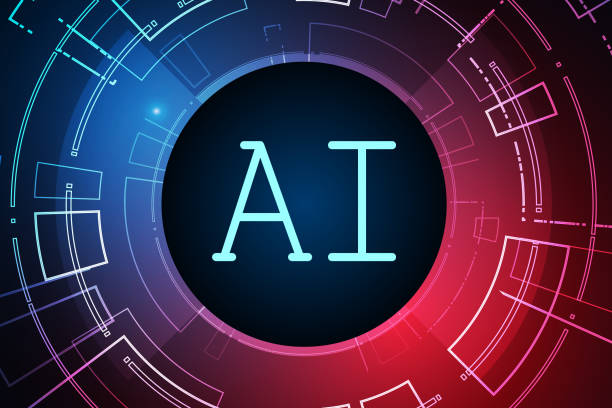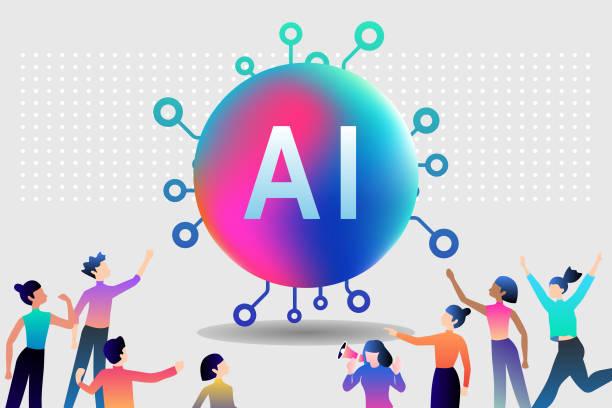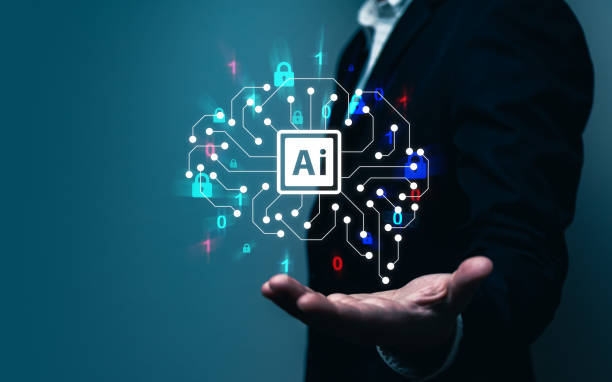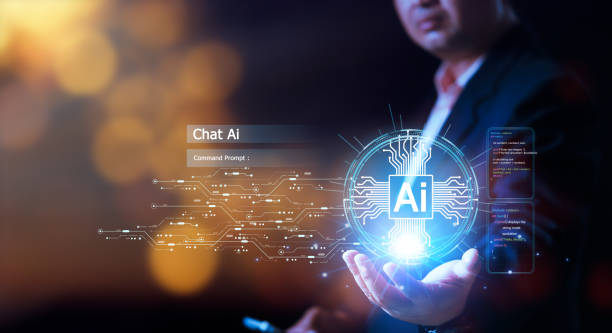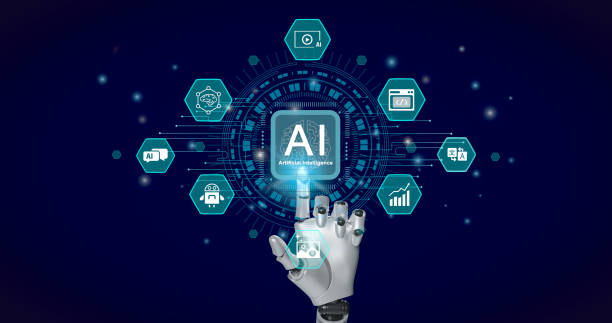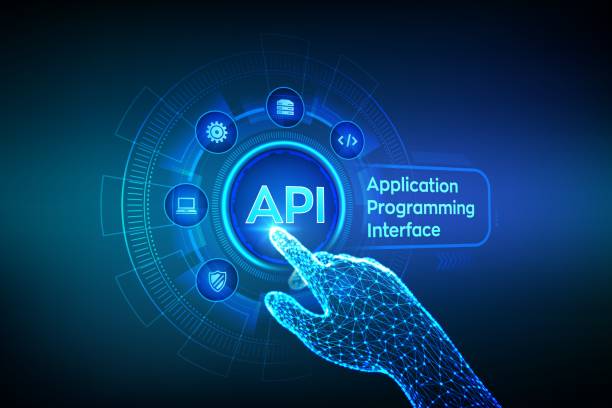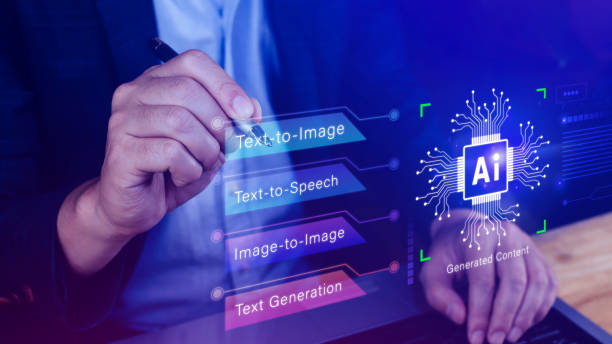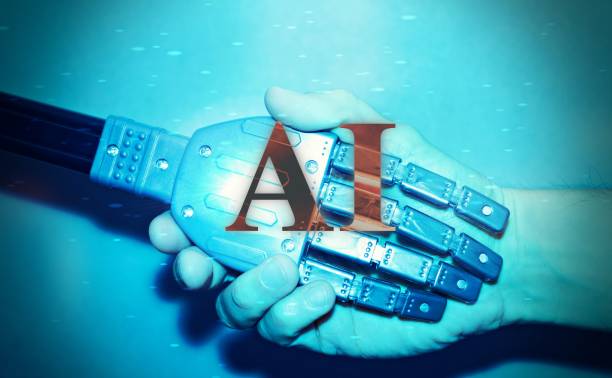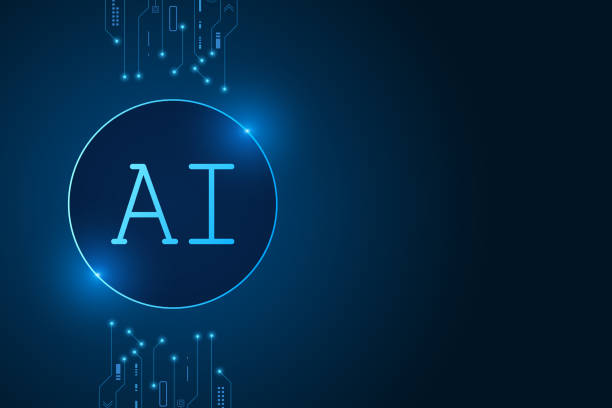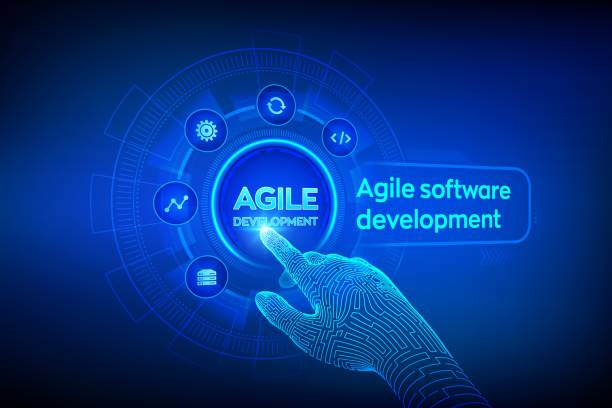What is an artificial intelligence robot and what are its uses?
What is an artificial intelligence robot and what are its uses?
An artificial intelligence robot (#AI Robot) is a combination of two important technology fields: robotics and artificial intelligence.
In simple terms, these robots are machines that, using artificial intelligence algorithms, are capable of performing tasks that usually require human intelligence.
These tasks can include learning, reasoning, problem-solving, understanding natural language, and interacting with the environment.
Artificial intelligence allows the robot to make decisions automatically and without the need for explicit instructions, and to improve its performance based on received information.
The applications of #artificial intelligence robots are very broad and diverse.
In industry, they are used for automating production processes, quality control, and logistics.
In the field of healthcare, there are surgical robots, nurse robots, and pharmacist robots that help doctors and nurses perform their tasks.
In education, educational robots can help students learn various concepts.
Also, artificial intelligence robots are used in homes as personal assistants, cleaning robots, and entertaining robots.
Rescue robots also save human lives in critical and dangerous situations.
In short, #AI_Robot is a new and powerful phenomenon that is transforming our lives, and with further advances in the field of artificial intelligence and robotics, it can be expected that the role of these robots will become more prominent and widespread in the future.
Artificial intelligence robots are used in many industries and fields.
Are you tired of losing business opportunities due to not having a professional company website?
Rasawb helps you by designing a professional company website:
✅ Create a powerful and reliable image of your brand
✅ Convert website visitors into loyal customers
⚡ Get a free consultation right now!
Main components of an artificial intelligence robot
Click here to preview your posts with PRO themes ››
Main components of an artificial intelligence robot
An #AI_Robot consists of various components, each of which has a specific task.
These components are generally divided into three main categories:
- Hardware: Includes the robot’s body, motors, sensors, and actuators.
The robot’s body forms the physical structure of the robot and is made of various materials such as metal, plastic, or composite.
Motors provide the necessary force for the robot to move.
Sensors collect information about the surrounding environment.
This information can include images, sounds, temperature, pressure, etc.
Actuators enable the robot to interact with the surrounding environment.
For example, a robot can pick up objects using mechanical arms or speak to humans using a speaker. - Software: Includes the operating system, artificial intelligence algorithms, and application programs.
The operating system provides the platform for running programs.
Artificial intelligence algorithms enable the robot to learn, reason, and make decisions.
Application programs define the specific tasks that the robot must perform. - Artificial Intelligence: The core of an #AI_Robot is its artificial intelligence.
Artificial intelligence is a collection of techniques and algorithms that allows the robot to think and act like humans.
Artificial intelligence includes various fields such as machine learning, natural language processing, machine vision, and robotics.
The combination of these three components enables an artificial intelligence robot to perform complex tasks that were previously only possible by humans.
An artificial intelligence robot with these components can change our world.
Types of artificial intelligence robots based on application
Types of artificial intelligence robots based on application
#AI_Robot has different types based on application, each of which is designed to perform specific tasks.
Some of the most important types of artificial intelligence robots are:
- Industrial robots: These robots are used in factories and production lines to perform tasks such as welding, painting, packaging, and assembling parts.
Industrial robots are usually very precise and fast and can work continuously and without fatigue. - Medical robots: These robots are used in hospitals and medical centers to perform tasks such as surgery, nursing, rehabilitation, and pharmacy.
Medical robots can help doctors and nurses perform their tasks with greater accuracy and efficiency.
Medical robots can also help patients recover faster. - Service robots: These robots are used in various environments such as homes, hotels, restaurants, and stores to perform tasks such as cleaning, serving food, delivering goods, and providing information to customers.
Service robots can help humans with daily tasks and make life easier. - Military robots: These robots are used in the army and armed forces to perform tasks such as reconnaissance, bomb disposal, equipment transportation, and fighting.
Military robots can save human lives on the battlefield and perform military operations more efficiently. - Educational robots: These robots are used in schools and universities to help students learn different concepts.
Educational robots can help students learn complex concepts and increase their motivation to learn.
| Robot Type | Application |
|---|---|
| Industrial | Welding, Painting, Packaging |
| Medical | Surgery, Nursing, Rehabilitation |
| Service | Cleaning, Serving food, Delivering goods |
| Military | Reconnaissance, Bomb disposal |
These are just a few examples of the different types of #AI_Robot, and with advances in technology, it can be expected that new types of robots with newer and more diverse applications will be introduced to the market.
Challenges and limitations of artificial intelligence robots
Challenges and limitations of artificial intelligence robots
While #AI_Robot has a lot of potential to improve our lives, it also faces challenges and limitations.
Some of the most important of these challenges are:
- High cost: Designing, building, and maintaining artificial intelligence robots is usually very expensive.
This makes it impossible for many organizations and individuals to use these robots. - Complexity: Designing and programming artificial intelligence robots is very complex and requires high expertise and skill.
This makes it difficult to develop and maintain these robots. - Ethical limitations: The use of artificial intelligence robots is associated with various ethical issues.
For example, if an artificial intelligence robot makes a decision that is detrimental to humans, who will be responsible? - Security problems: Artificial intelligence robots can be cyberattacked and hacked.
This can lead to serious damage. - Dependence on data: The performance of artificial intelligence robots is highly dependent on the data with which it has been trained.
If the data is incomplete or incorrect, the robot’s performance will also be affected.
Despite these challenges, efforts to overcome these limitations continue, and with advances in technology, it can be expected that many of these challenges will be resolved in the future.
Artificial intelligence robots can overcome problems with perseverance.
Are you worried that your old company website is driving away new customers? Rasawb solves this problem with a modern and efficient company website design.
✅ Increases the credibility of your brand.
✅ Helps to attract targeted customers.
⚡ Contact Rasawb for a free consultation!
What will the future of artificial intelligence robots be?
What will the future of artificial intelligence robots be?
The future of #AI_Robot looks very bright and promising.
With the increasing advances in the field of artificial intelligence and robotics, it can be expected that robots will play a much more important role in our lives in the future.
Some of the important trends that can shape the future of artificial intelligence robots are:
- Smarter robots: In the future, robots will be able to make better decisions and perform more complex tasks using more advanced artificial intelligence algorithms.
- More flexible robots: In the future, robots will be able to easily adapt to new environments and perform various tasks.
- Cheaper robots: With advances in technology and increased production, the cost of robots will decrease, and it will be possible for more organizations and individuals to use them.
- More human-robot collaboration: In the future, humans and robots will increasingly collaborate with each other.
Robots can help humans perform difficult and repetitive tasks, and humans can focus on creative and innovative tasks. - Expansion of robot applications: Robots will be used in various fields such as healthcare, education, transportation, agriculture, and construction in the future.
In general, it can be said that the future of #AI_Robot is very exciting, and these robots can play an important role in improving our lives.
Artificial intelligence robots are building the future.
How to build an artificial intelligence robot
How to build an artificial intelligence robot?
Building an #AI_Robot can be a challenging but very rewarding project.
To get started, you need knowledge and skills in various fields such as robotics, programming, and artificial intelligence.
Here is a step-by-step guide to building an artificial intelligence robot:
- Determine the goal: First of all, you need to specify what you want your robot to do.
Do you want to build a simple robot that can move objects or a more complex robot that can interact with humans? - Choose hardware: Based on your goal, you need to choose the appropriate hardware.
This includes the robot’s body, motors, sensors, actuators, and controller. - Program the robot: After selecting the hardware, you need to program your robot.
This involves writing code that tells the robot how to move, work with sensors, and interact with the surrounding environment. - Implement artificial intelligence: To make your robot truly intelligent, you need to implement artificial intelligence algorithms.
This can include using machine learning, natural language processing, or machine vision. - Test and optimize: After building the robot, you need to test it and optimize its performance.
This includes fixing code bugs, adjusting the parameters of artificial intelligence algorithms, and improving hardware design.
There are many resources available to learn how to build artificial intelligence robots.
You can use books, online training courses, and open source projects.
Also, you can use the experiences of others by joining robotics and artificial intelligence communities.
Building an artificial intelligence robot requires a lot of effort and perseverance, but the result can be very valuable.
#AI_Robot is built with effort.
Introducing some famous artificial intelligence robots
Introducing some famous artificial intelligence robots
Over the years, many #AI_Robot have been built, each of which has become famous for different reasons.
Some of these robots are known for their extraordinary abilities, some for their attractive appearance, and some for the roles they have played in films and series.
Here are a few examples of famous artificial intelligence robots:
- Sophia: Sophia is a humanoid robot built by Hanson Robotics.
Sophia has become famous for her ability to mimic human facial expressions and answer questions.
Sophia has even received honorary citizenship from Saudi Arabia. - Atlas: Atlas is a humanoid robot built by Boston Dynamics.
Atlas has become famous for his ability to walk, run, jump, and perform parkour moves. - Pepper: Pepper is a humanoid robot built by SoftBank Robotics.
Pepper has become famous for his ability to recognize human emotions and respond to them.
Pepper is used in stores, hospitals, and schools to help people. - Roomba: Roomba is a robot vacuum cleaner built by iRobot.
Roomba has become famous for his ability to automatically clean homes. - ASIMO: Asimo is a humanoid robot built by Honda.
Asimo has become famous for his ability to walk, run, jump, and dance.
| Robot Name | Manufacturer | Outstanding Feature |
|---|---|---|
| Sophia | Hanson Robotics | Mimicking human facial expressions |
| Atlas | Boston Dynamics | Walking and parkour moves |
| Pepper | SoftBank Robotics | Recognizing human emotions |
| Roomba | iRobot | Automatic house cleaning |
These are just a few examples of famous #AI_Robot, and with advances in technology, it can be expected that new and more advanced robots will be introduced to the market.
Artificial intelligence robots will soon play a role in all of our lives.
The impact of artificial intelligence robots on jobs
The impact of artificial intelligence robots on jobs
#AI_Robot has a significant impact on various jobs, and these impacts can be both positive and negative.
On the one hand, robots can perform repetitive and dangerous tasks, increase productivity, and reduce costs.
On the other hand, robots can replace humans in some jobs and lead to job losses.
Jobs that are most at risk of automation are jobs that involve repetitive and predictable tasks.
These jobs include production line workers, truck drivers, office workers, and cashiers.
Jobs that are less at risk of automation are jobs that involve creative skills, problem-solving, and social interaction.
These jobs include doctors, teachers, artists, and managers.
To benefit from the advantages of #AI_Robot and prevent its negative effects, we must take action.
These actions include training the workforce for new jobs, creating support policies for people who lose their jobs, and investing in artificial intelligence research and development.
With proper management, we can use robots to improve our lives and create a stronger economy.
Artificial intelligence robots can create new jobs in the future.
How much does losing business leads due to an unprofessional website cost you? Solve this problem forever with a professional company website design by Rasawb!
✅ Increase the credibility and trust of potential customers
✅ Easier attraction of new business leads
⚡ Get a free consultation right now!
Ethical issues related to artificial intelligence robots
Ethical issues related to artificial intelligence robots
The development and use of #AI_Robot raises various ethical issues that must be addressed.
Some of the most important of these issues are:
- Accountability: If an artificial intelligence robot makes a mistake or causes harm, who will be responsible? Is the robot’s manufacturer, programmer, user, or the robot itself responsible?
- Privacy: Artificial intelligence robots can collect a large amount of personal information.
How can this information be protected and prevented from being misused? - Discrimination: Artificial intelligence algorithms can be discriminatory if the data they are trained with is discriminatory.
How can discrimination be prevented in artificial intelligence algorithms? - Security: Artificial intelligence robots can be cyberattacked and hacked.
How can robots be protected from cyberattacks? - Control: How can it be ensured that artificial intelligence robots are under human control and serve human interests?
These are just a few examples of the ethical issues related to #AI_Robot, and with advances in technology, new ethical issues will also arise.
To solve these issues, we need dialogue and cooperation between ethics experts, computer scientists, policymakers, and the general public.
Artificial intelligence robots must adhere to ethics.
Educational resources for learning robotics and artificial intelligence
Educational resources for learning robotics and artificial intelligence
If you are interested in learning robotics and artificial intelligence, there are many educational resources available to you.
Some of these resources include:
- Online training courses: Sites like Coursera, edX, and Udemy offer a variety of training courses in the field of robotics and artificial intelligence.
- Books: There are many books on robotics and artificial intelligence that you can use to learn basic and advanced concepts.
- Online communities: There are many online communities where you can interact with other robotics and artificial intelligence enthusiasts and use their experiences.
- Open source projects: There are many open source projects in the field of robotics and artificial intelligence that you can use for practical learning.
- Universities and educational centers: Many universities and educational centers offer training courses in the field of robotics and artificial intelligence.
By using these educational resources, you can acquire the knowledge and skills needed to build and program artificial intelligence robots.
#AI_Robot requires learning.
Frequently Asked Questions
| Row | Question | Answer |
|---|---|---|
| 1 | What is an artificial intelligence robot? | An artificial intelligence robot is a machine capable of understanding, reasoning, learning, and problem-solving, and can perform complex tasks with relative autonomy. |
| 2 | What are the most important applications of artificial intelligence robots? | The main applications include industrial production, customer service (chatbots), medicine and surgery, self-driving transport, space exploration, and military affairs. |
| 3 | What is the main difference between an artificial intelligence robot and a regular robot? | A regular robot only follows programmed instructions, while an artificial intelligence robot can learn from data, make decisions, and adapt to new environments. |
| 4 | How do artificial intelligence robots learn? | They use machine learning algorithms (such as deep learning, reinforcement learning) and process vast amounts of data, identify patterns, and improve their performance. |
| 5 | Can artificial intelligence robots have emotions? | Currently, artificial intelligence robots do not have real emotions in the human sense. They can mimic or detect emotions, but do not have the understanding and experience of them. |
| 6 | What are the current limitations of artificial intelligence robots? | Limitations include the need for large amounts of data, inability to understand abstract concepts, lack of real creativity, ethical issues, and challenges of generalizability in new environments. |
| 7 | What is the role of artificial intelligence in the development of Humanoid robots? | Artificial intelligence helps humanoid robots walk, maintain their balance, understand the surrounding environment, interact with humans, and perform complex tasks. |
| 8 | How is the future of artificial intelligence robots predicted? | It is predicted that artificial intelligence robots will become smarter, more autonomous, and capable of performing more complex tasks in everyday life and industry, and their interaction with humans will increase. |
| 9 | Can artificial intelligence robots replace all human jobs? | It is unlikely that all human jobs will be replaced. Robots take on many repetitive and dangerous tasks, but jobs that require creativity, empathy, and moral judgment will remain. |
| 10 | What ethical and social challenges arise with the expansion of artificial intelligence robots? | Challenges include issues related to privacy, data security, ethical decision-making by robots, the impact on employment, and accountability in the event of errors. |
And other services of Rasa Web advertising agency in the field of advertising
Intelligent Sales Automation: A fast and efficient solution for increasing click-through rates with a focus on marketing automation.
Intelligent UI/UX: A combination of creativity and technology to analyze customer behavior through precise audience targeting.
Intelligent Social Media: Professional optimization for digital branding using marketing automation.
Intelligent Direct Marketing: An effective tool to attract customers with the help of Google Ads management.
Intelligent Content Strategy: Designed for businesses looking to manage campaigns through attractive user interface design.
And more than hundreds of other services in the field of internet advertising, advertising consulting and organizational solutions
Internet Advertising | Advertising Strategy | Advertorial Report
Sources
Smart Doctor Human Robot
,What is artificial intelligence and what are its applications?
,What is artificial intelligence? What applications does it have in today’s life?
,What is artificial intelligence?
? To boost your business in the digital world and reach the peak of success, Rasaweb Afarin Digital Marketing Agency, specializing in online store website design and comprehensive marketing strategies, is with you to experience a powerful and profitable presence.
📍 Tehran, Mirdamad Street, next to the Central Bank, South Kazerun Alley, Ramin Alley No. 6

